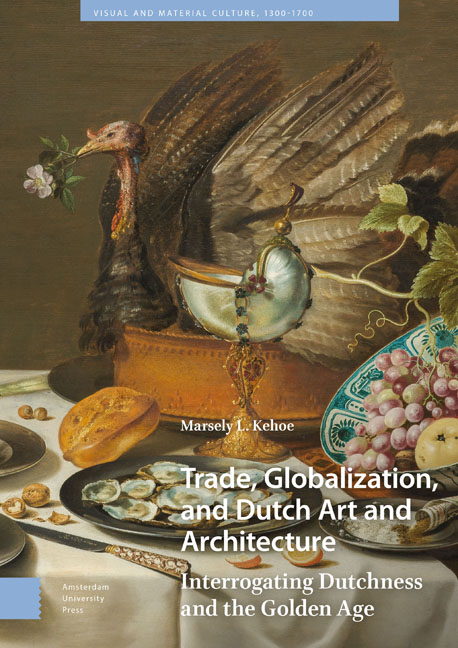Book contents
- Frontmatter
- Contents
- List of Illustrations
- 1 Introduction: Grasping at the Past
- 2 The Gilded Cage: Dutch Global Aspirations
- 3 Gathering the Goods: Dutch Still Life Painting and the End of the “Golden Age”
- 4 Dutch Batavia: An Ideal Dutch City?
- 5 Simplifying the Past: Willemstad’s Historic and Historicizing Architecture
- 6 Conclusion: The “Golden Age” Today
- Works Cited
- Acknowledgements
- Index
2 - The Gilded Cage: Dutch Global Aspirations
Published online by Cambridge University Press: 13 February 2024
- Frontmatter
- Contents
- List of Illustrations
- 1 Introduction: Grasping at the Past
- 2 The Gilded Cage: Dutch Global Aspirations
- 3 Gathering the Goods: Dutch Still Life Painting and the End of the “Golden Age”
- 4 Dutch Batavia: An Ideal Dutch City?
- 5 Simplifying the Past: Willemstad’s Historic and Historicizing Architecture
- 6 Conclusion: The “Golden Age” Today
- Works Cited
- Acknowledgements
- Index
Summary
Abstract: This chapter introduces the historical background of the Dutch Golden Age and considers the aspirations of the new Dutch Republic to build trading relationships throughout the world. Hugo Grotius's Freedom of the Seas (1608) argued that all nations should be free to trade on equal footing, and that the Dutch could enforce this freedom by challenging, in particular, the Spanish and Portuguese. Dutch trading companies, monopoly policies, and piracy and privateering, however, complicated Dutch support for freedom. The mounted nautilus cup serves as a metaphor for these aspirations, a display of the appealing exotica of the East, firmly controlled within a silver matrix designed by Dutch metalworkers.
Keywords: nautilus cup, silver, monopoly, piracy, trading company
The nautilus cup was much desired during the Dutch “Golden Age,” as attested by its presence in seventeenth-century collections and its regular appearance in Dutch still life painting. Among other curious objects, Pieter Claesz depicts a nautilus cup in specific detail, intricate enough to identify this as the nautilus cup mounted in 1596 by Utrecht goldsmith Jan Jacobsz. van Royesteyn. (figures 2.1 and 2.2) Another typical example of this curious object is a similar mount made in 1592 in Delft, possibly by Nicolaas de Grebber. (plate 1) This object was depicted in the painted collection inventory, The Paston Treasure (1670s), painted in England by an unknown Dutch artist. The mother-of-pearl surface of the shell, incised with lines forming foliage, birds, and tiny scales, serves as the rounded body for a gilded monster with open mouth and scaly neck, wrapped on four sides with narrow figural straps. This, with an extended lip suggestive of pouring, comprises the bowl of a goblet, which is mounted on a stem of two satyrs, one playing a flute and other singing from a book, and held steady by a flattened turtle atop a decorative base. Various details on the mount refer to the sea: the man riding the monster's neck is a tiny Neptune, and once held a trident, a miniature nautilus floats at the turtle's side, and tiny scallop shells are included throughout.
- Type
- Chapter
- Information
- Trade, Globalization, and Dutch Art and ArchitectureInterrogating Dutchness and the Golden Age, pp. 39 - 84Publisher: Amsterdam University PressPrint publication year: 2023



